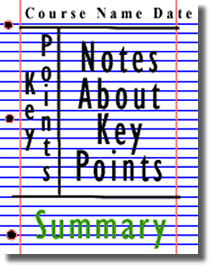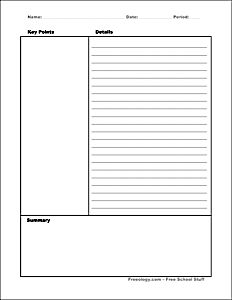Cornell Notes Starter Kit
Lark S. EscobarCornell Notes Starter Kit
Lark S Escobar
The Flipped Classroom model assumes that students are active note takers and experienced with using a note taking system called Cornell Notes. This system of note taking was developed by a professor at Cornell University in the 1950’s, a Dr. Walter Pauk. He spearheaded the development of the system in the quest to research the most necessary study skills that are requisite for college learning and success sin ce these skills were (and often still are) underdeveloped in American students enrolling in universities at that time.
ce these skills were (and often still are) underdeveloped in American students enrolling in universities at that time.
So What are Cornell Notes?
Cornell Notes are a simple and easy approach to organizing information across the content areas- so regardless of what subject or ability level learners are enrolled in; they can begin using this system to take notes. In 2008, Wichita State University specifically researched the effectiveness of using Cornell Notes in the English language-learning environment and found that students made considerable gains particularly concerning their ability to complete non-memorization-based tasks such as synthesis and application of learned language and content (Jacobs, 2008). This has resulted in the widespread use of the Cornell Notes system in secondary schools throughout the United States, particularly with college-bound learners.
There are three main sections of Cornell Notes: Keypoints, Details, and a summary:

For a downloadable PDF version students can use on their iPads, click here.
References for further reading:
Jacobs, K. (2008). A Comparison of Two Note Taking Methods in a Secondary English Classroom. Proceedings of the 4th Annual GRASP Symposium, 119-120.
Payne, R. (2005). A framework for understanding poverty (4th rev. ed.). Highlands, Tex.: Aha! Process.
